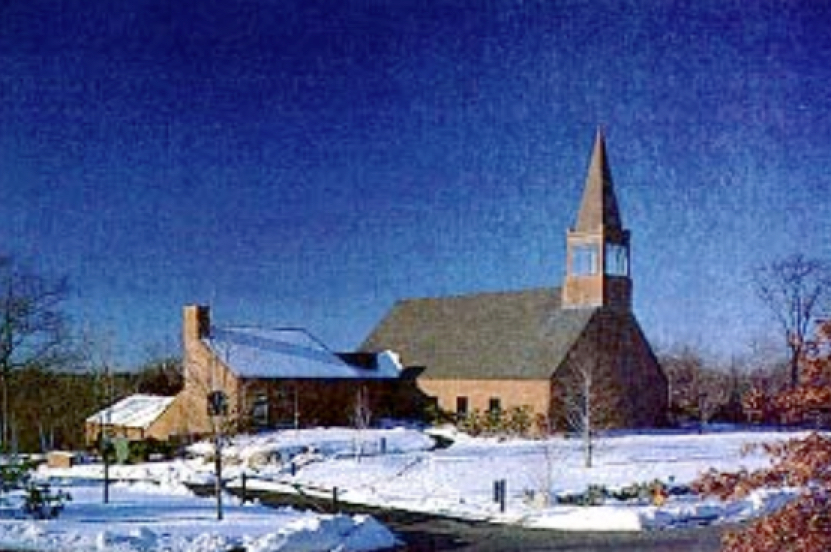|
|
1990—Carl |
|
| Near the end of his life, Walter Carlisle Barber reached out to connect with his earliest memories. He had grown up in a Latter-day Saint family in Logan, Utah, but had maintained only marginal contact over the years with The Church of his heritage. We met one morning, when Carl and Katie came to the regular Sunday meetings of the Arlington congregation, whose boundaries include their home in Lexington. Physically, Katie brought Carl to church; his health was failing, and he wouldn’t have been able to make it on his own. As a lifelong Catholic, though, she was clearly and luminously there “with him.” |

The Belmont Chapel (on the Arlington-Belmont line) |
Carl and I shared associations with the Physics Department at MIT that afforded us common ground. I may have been the only ward member with such connections; be that as it may, I was assigned as Carl’s and Katie’s Home Teacher, as we called the function in those days1 and that relationship rapidly developed into an intergenerational friendship that I still treasure2.
Carl and Katie had lived for many years on the edge of the Great Meadow in Lexington, raising four daughters and sending them forth in a typical 20th-century familial diaspora. |
|
As a young college graduate, Carl worked on the Manhattan Project in Oak Ridge. After the war he became professor of physics and director of the High Energy Physics Laboratory at Stanford, where he built the first medical linear accelerator for the treatment of cancer. At MIT since 1968, Carl had continued his distinguished research, shaped many young lives, and achieved the status of professor emeritus. And in the late 1980s, he sensed open circles that he wanted to close.
In this project, time was not Carl’s friend. By the time I knew him, his liver was trying hard to give up. One cannot help wondering what he might have accomplished if achievement had not shared his energies with the alcoholism that killed him. When we played chess in a series of rehab facilities, I could tell how recently the doctors had propped him up with transfusions. We could see the veins through his translucent skin; if the blood in them was fresh, he’d wipe up the chess-board with me, reliably and gleefully. If it had been a while, though, he would see only a couple of moves ahead, and I’d have a much easier time. Under those conditions, if I occasionally threw a game his way, he was too muddled to know. |
|
1In 2019, the program was renamed “Ministering.” An improvement, to my way of thinking. Under either title, the assignment entailed fairly frequent visits and general watchcare over the assigned household. 2Bishop Bert van Uitert once accused me in public of cheating, in my role as Home Teacher: ”Andy makes friends of the people he’s assigned to!“ I wear that guilt as a badge of honor. |
|
Back a Page (1990—Visitors) |
Such a Life Contents |
Chapter 3 (1958-1971) |
Chapter 4 (1972-2002) |
1989 1990 1991 |
Chapter 5 (2003-?) |
Next Page (1990—Carl) |
| Welcome | Stories | Sections | Such a Life | People | Places | Site Search | Do You Know? |
| Updated Jul 2020 | [1990p12.htm] | Page 490-12 |